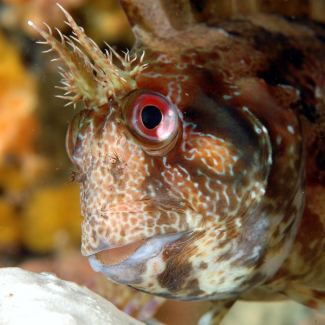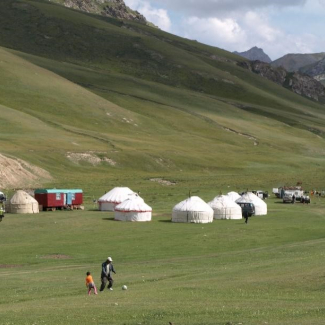
Agricultural intensification is driving a decline in bird populations across Europe
|
|
An extensive, Europe-wide scientific study has quantified for the first time the direct impact of different human activities on birds on a continental scale. Data collected over nearly 40 years shows a loss of nearly a quarter of all birds over this period. More specifically, the study demonstrates the predominant detrimental impact of agricultural intensification. The study, led by two CNRS scientists and a doctoral student from the Université de Montpellier, included researchers from the Museum national d’histoire naturelle and several European countries. Their findings appear in PNAS the week of 15 May 2023.
Some 20 million. This is the number of birds that have disappeared in Europe every year on average over a period of nearly 40 years. A total of 800 million fewer birds since 1980. These figures were recently established by a European team that has demonstrated in a single study the predominant role played by agricultural practices.
Scientists compared several human sources of pressure: changes in temperatures, urbanisation, changes in forest cover and agricultural practices. For the first time, they were able to quantify the influence of each pressure on bird populations as well as its importance relative to other pressures, using the most comprehensive set of data ever assembled: 37 years of data from 20,000 sites in 28 European countries, for 170 different bird species. This data enables the detailed study of the pressures in each country from one year to the next and relatively to each other.
While bird populations suffer from the combination of these pressures, scientists show that the most adverse effects come from the increased per-hectare use of fertilizers and pesticides associated with agricultural intensification. Because fertilizers and pesticides can disrupt the entire food chain of an ecosystem, this trend has led to the decline of many bird populations, and of insectivorous species in particular.
The second largest pressure source is an overall increase in temperatures, which primarily affects colder-climate species and has resulted in a 40% decline. Warm-climate species are not spared: their populations have declined by 18%. While the number of birds has dropped across the continent, some ecosystems are more severely affected than others: the number of forest-dwelling birds has decreased by 18%, while this figure rises to 28% for city-dwelling birds and jumps to 57% for birds in agricultural environments.
France is a prime example of the situation in Europe: it has one of the highest percentages of intensely farmed land surface and is among the countries where this percentage has increased the most in recent years. Temperatures also increased by about 1°C between 1996 and 2016, and the percentage of built-up areas exceeds the European average. Forest cover in France, however, which is lower than the European average, has increased since 1996. Bird populations in agricultural environments and forests decreased by 43% and 19% respectively. The number of birds nesting in urban areas has increased by 9%. The populations of certain species have dropped dramatically: by 75% in the case of tree sparrows, whinchats and meadow pipits.
This decline, an illustration of the impact of human activities on a whole group of species with highly divergent needs, is a signal of profound environmental degradation. Birds play a direct role in fundamental interactions within ecosystems, including predation and the regulation of other species, the dissemination of seeds, and as resources for other predatory species. As a result, their disappearance is a threat to all ecosystems.
This research, which highlights a pressing need to rethink current food production methods, received support from the Office français de la biodiversité (OFB), the Institut des sciences de l'évolution de Montpellier (CNRS/IRD/Université de Montpellier) and the Centre d'écologie et des sciences de la conservation (CNRS/MNHN/Sorbonne Université).

© Vincent Devictor

© Aurélien Audevard
Farmland practices are driving bird populations decline across Europe. Rigal, S et al. PNAS, week of 15 May 2023.


